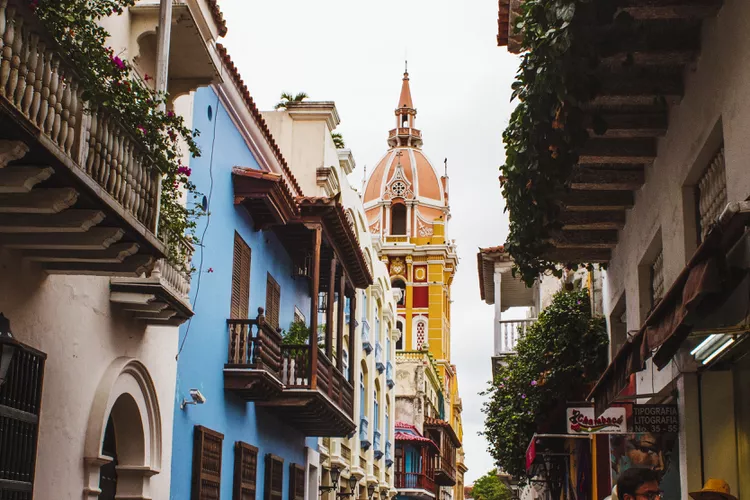Summary of Cartagena Attractions
Discovering Cartagena: A Gem on the Caribbean Coast
Hot, sultry, filled with the sounds of music, and bright with color and tradition, Cartagena de Indias in Colombia has been an important port on the Caribbean since it was founded in 1533. Historically, gold and silver left the port bound for Europe, while pirates looted the city, prompting the construction of a walled fort to protect shipping and the slave trade.
Cartagena’s Historical Significance
Cartagena still attracts attention, though now it’s from tourists eager to enjoy its rich history, stunning sights, favorable weather, and vibrant nightlife. To fully appreciate the colonial architecture, modern urban life, and fashionable seaside atmosphere, plan a multi-day stay.
Cartagena’s colonial charm and the old walled city, known as the Ciudad Amarullada, with its tiled roofs, balconies, and flower-filled courtyards, invite visitors to stroll along the narrow streets, making it an ideal weekend getaway destination.
Things to See and Do
- Casa de Marqués Valdehoyos on Calle Factoría serves as a great starting point for exploring the old city. This house exemplifies old Cartagena, and the tourist office inside offers maps and useful information.
- Museo de Oro y Arqueloguía on Plaza Bolivar features a remarkable collection of gold and pottery from the Sinú culture. Nearby, the Palacio de la Inquisicíon showcases colonial architecture and houses a museum displaying instruments from the Spanish Inquisition.
- Cartagena’s Cathedral boasts a massive exterior and a simple interior, though its fortress-like structure offers historical intrigue, having been partially demolished by Sir Francis Drake’s cannons before its completion in 1602.
- Iglesia de Santo Domingo on Calle Santo Domingo is the oldest church in the city, retaining much of its colonial character and built to withstand invaders.
- Las Bóvedas, initially designed as dungeons for military purposes, now host boutiques and tourist shops.
- Castillo de San Felipe de Barajas is the largest of a series of fortresses erected to protect against pirates. Be sure to explore the elaborate tunnel system designed for supplies and evacuation.
- Perched above the fortress, Convento de la Popa features beautiful flower-filled patios and offers stunning views of Cartagena, particularly at sunset. This site also includes a museum and the chapel dedicated to the Virgen de la Candelaria, the city’s patron saint.
The city’s newer areas, Bocagrande and El Laguito, situated on the Caribbean-facing peninsula, are now popular hotspots featuring upscale hotels, eateries, and shopping venues. While the beaches may not impress, the vibrant nightlife will surely make up for it.

Excursions and Day Trips
Outside the city, several excursions enhance your experience:
- Mompós lies on the Río Magdalena and was a vital trading port between the Caribbean and Colombia’s interior. Though commercial life has ceased as the river shifted, the town retains its unique, curved streets and delightful colonial architecture.
- Santa Marta is the oldest Hispanic town in Colombia, celebrated for its colonial history. It also functions as a gateway to the Sierra Nevada and the pre-Columbian ruins of La Ciudad Perdida. Notably, the Museo Arqueológico Tayrona showcases Tayrona gold and pottery, while the Quinta de San Pedro Alejandrino is the historic site where Simon Bolívar passed away.
- Parque Nacional Tayrona offers stunning white sandy beaches (with rough waters that can be dangerous for swimming), lush jungle landscapes, and the highest coastal mountain range in the world. This park is popular among trekkers, hikers, and campers, and it features an ancient Tayrona village called Pueblito currently under excavation.
Celebration of Independence
If visiting in November, don’t miss the vibrant celebration of Cartagena’s independence. The event marks November 11, 1811, when the Declaración de Independencia Absoluta was signed, declaring independence from Spain.
This content has been updated to reflect the latest information about Cartagena’s attractions and activities.





